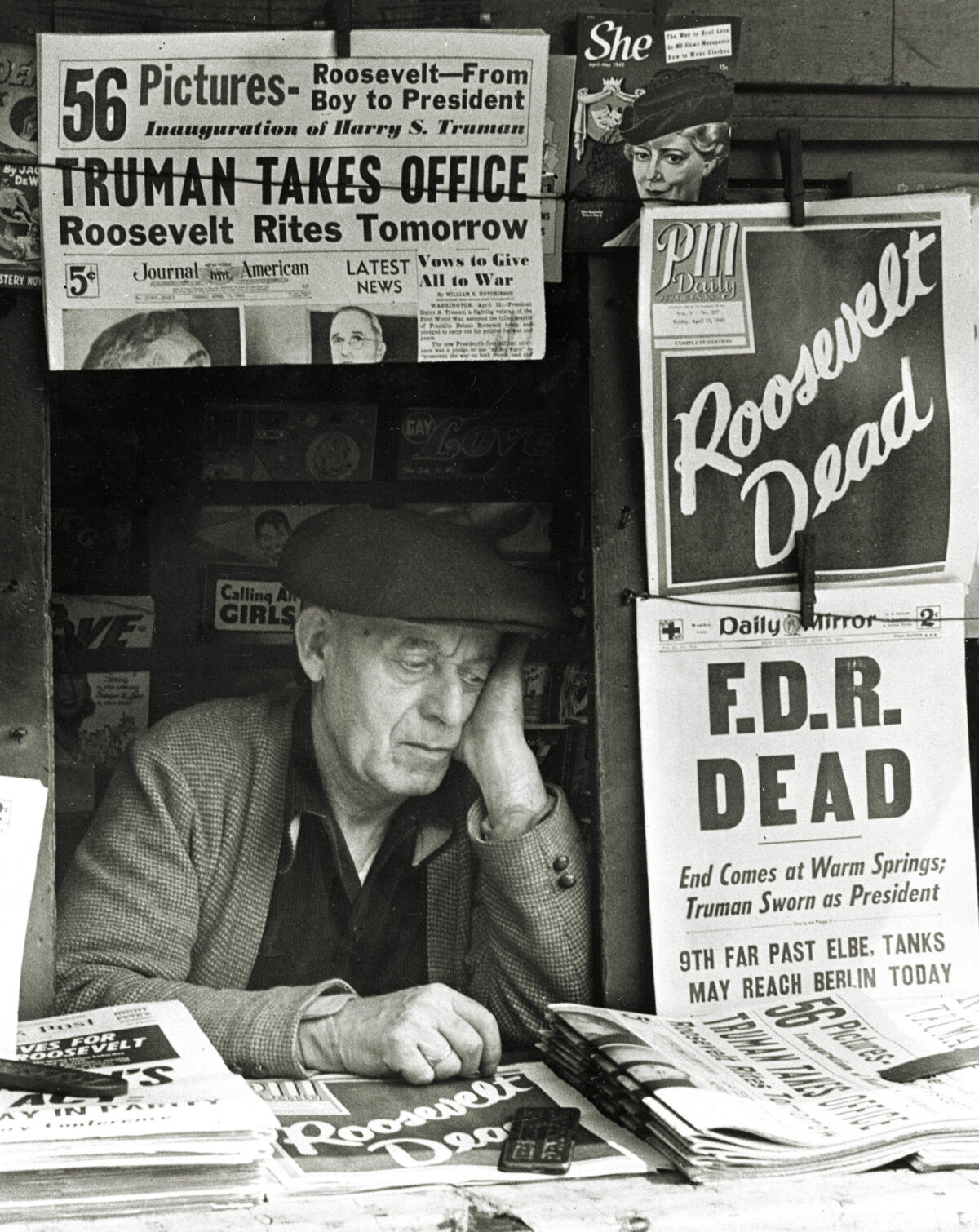President Franklin D. Roosevelt died on April 12, 1945, after suffering a stroke at his getaway in Warm Springs, Georgia. The news exploded like a bomb for shocked and disbelieving Americans, who had grown used to having FDR as president during his unprecedented dozen years in the White House. He had guided the nation through the Great Depression and almost to the end of World War II. No one was more stunned by Roosevelt’s death then his vice president, Harry Truman, who said, “I felt like the moon, the stars, and all the planets had fallen on me.”
The news hit home for the average American, too, as this photograph of a downcast newsstand operator in New York attests. But the most interesting thing about the image is the identity of the photographer who took it. Stanley Kubrick was a 17-year-old photography-obsessed senior at William Howard Taft high school in the Bronx when he captured the vendor’s image on the corner of the Grand Concourse and 172nd Street. After receiving an offer of $10 from the New York Daily News, Kubrick took his shot to Look magazine, which paid him $25. The photo appeared in the magazine’s June 26, 1945, issue. It was the first photo that Kubrick sold to the newsweekly, the start of a relationship that continued for several years and served as a springboard to Kubrick’s career directing films, starting with a short in 1951 called “Day of the Fight” and leading to classics such as “Dr. Strangelove or: How I Learned to Stop Worrying and Love the Bomb” and “2001: A Space Odyssey.”
historynet magazines
Our 9 best-selling history titles feature in-depth storytelling and iconic imagery to engage and inform on the people, the wars, and the events that shaped America and the world.


